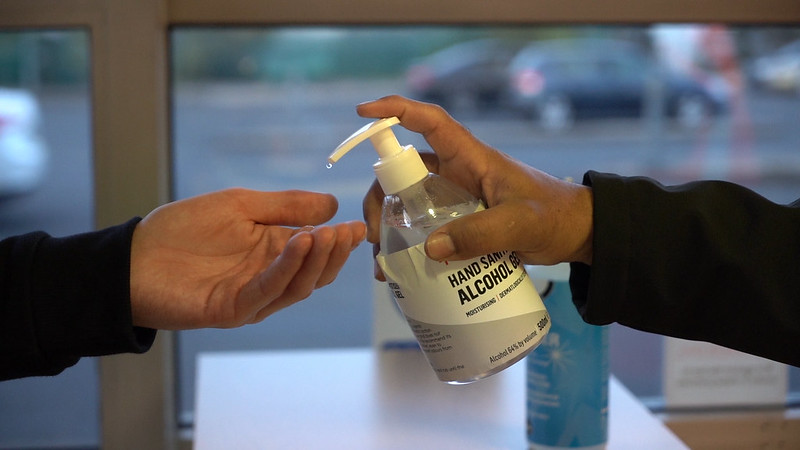
photo by Jake Evans
It’s already been the 3rd year since the coronavirus pandemic broke out. With quite a high level of booster shot rates, everyone is moving to return to normal life. In Japan as well, there were no restrictions announced by the government this summer. Also, international tourists are now allowed to enter Japan if they meet conditions. This might be why the number of active cases in Japan suddenly increased in July and August. We can hardly say that the coronavirus pandemic is over yet, but what is living in Japan like as of September 2022?
The current isolation rules
The Japanese government released the revised isolation plan for those who are infected with the coronavirus and their close contacts.
- Tested positive with symptoms or developed symptoms after diagnosis: the day symptoms onset is your Day 0. Isolate for 7 days and end isolation from Day 8 if 24 hours passed after symptoms disappeared.
- Tested positive with no symptoms and developed no symptoms afterward: the day you tested positive is your Day 0. Isolate for 7 days and end isolation on Day 8. Or, if you tested negative on Day 5, end isolation on Day 6.
- Close contact: the day that you started taking infection prevention measures or that the patient’s symptoms onset whichever later is your Day 0. Isolate for 5 days and end isolation on Day 6.
The above rules apply to people whose symptoms are mild. If you have severe symptoms, follow your doctor’s instructions.
Face masks are still a must
Even before the coronavirus pandemic, it was very common for Japanese people to were face masks in public. This is for the purpose of preventing pollen allergies and air pollution but also has worked well as an infection prevention measure. Most people still wear face masks in indoor public spaces such as commercial complexes. By the way, there are mixed types of face masks, for example, common surgical masks and fabric masks. There was a shortage of face masks in shops at the beginning of the pandemic but no longer.
At office and school
Japan hasn’t had a lockdown during the coronavirus pandemic, but instead, the government announced the declaration of a state of emergency and requested the whole nation to refrain from going out. As a result, companies, unis, and schools introduced remote working and remote learning. At present, those workers are halved in those who keep remote working and those who have gone back to commuting. Most remote workers are office workers and those who can’t afford to remote work, such as factory workers and hospitality workers, work on-site with strict infection controls. Many companies still have meetings and conferences online.
Schools have long gone back to normal on-site classes with strict infection control measures. Especially in primary schools and junior high schools impose those measures on learners, teachers, and other employees. However, such controls are rather easy at higher education facilities such as high schools and unis.
At eateries
When the Japanese government announced the declaration of a state of emergency in April 2020, restaurants and bars were restricted from opening after 8 pm or serving alcoholic drinks. The restaurant and bar businesses also suffered from the nationwide self-curfew movement. Now, there are no restrictions imposed on restaurant and bar businesses, but they still carry on with infection prevention measures such as partitions and hand sanitizing. Many people no longer are hesitant to eat out but some still are, and accordingly, the industry is still on the way to recovering as many customers as before the coronavirus pandemic.
Events and concerts
Big events and concerts may be the ones that had the biggest changes because of the pandemic. In 2020, many concerts, music festivals, and sports events were canceled, and from 2021, such events started being held with strict infection prevention measures. In addition to wearing face masks, visitors have to keep their distance from each other, and some venues even ban speak aloud during an event. Many people have found that going to a concert or event is totally different now. We may be able to enjoy lively atmospheres again once the pandemic is over, but especially in Japan where people tend to faithfully follow rules, it seems like we will keep on having this quietness for a while.
Travelling
2022 summer was the first summer for a while that we had no restrictions. Some might have enjoyed a long trip somewhere. There were holiday congestions on highways, at airports, and at railway stations. However, many people still refrain from traveling too far away, only travel within the prefecture they live in, and avoid going to crowded places. Also, going overseas has become easier now, though, increased airfares and strict infection controls are pushing back people from going abroad.
It’s time we went back to normal
Yes, it’s already the third year with the coronavirus pandemic. In 2020 and 2021, we were totally messed around by the pandemic, but now everyone is trying to go back to normal. This summer, Japan was hit by another wave and the situation went back to the refrain-from-going-out mood, but now it seems to have settled down. We may keep having more coronavirus waves, though, we can’t keep being bewildered by this pandemic forever, right?
